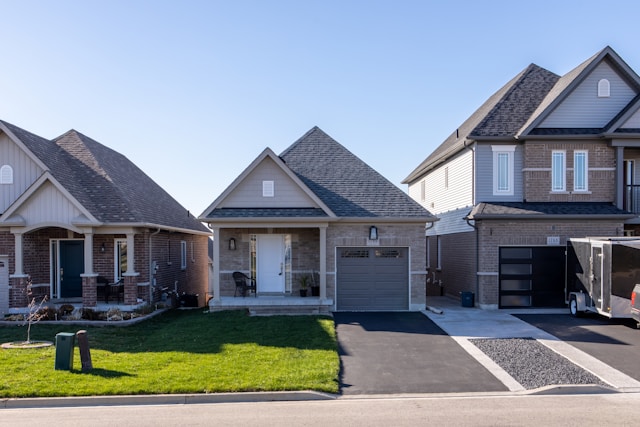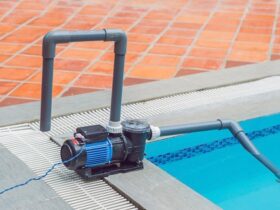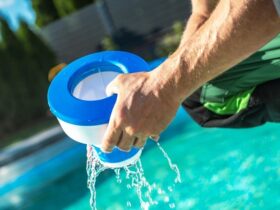Living in Seattle, with its stunning views and vibrant culture, also means preparing for its notoriously unpredictable weather. From the damp, heavy rains of fall and winter to the occasional gusty days that can sweep through seemingly out of nowhere, ensuring your home is fortified against the elements is crucial. This isn’t just about comfort; it’s about protecting your biggest investment from the potential ravages of moisture, wind, and even the rare snowy day.
The key to weatherproofing your home effectively lies not only in big renovations but also in regular maintenance that can prevent minor issues from becoming major headaches. Whether you’re updating your siding to better withstand moisture or ensuring your drainage system is robust enough to handle sudden downpours, each step is an important part of a comprehensive strategy. As we explore practical and efficient ways to safeguard your home, keep in mind that each measure not only adds to your immediate comfort but also enhances the long-term value and safety of your property in Seattle’s unique climate.
1. Upgrade Your Home’s Exterior with Quality Siding
A robust outer shell is crucial for keeping weather elements at bay, and one of the most effective shields is high-quality siding. In places like Seattle, where moisture can be relentless, opting for durable, water-resistant materials can make a huge difference. Installing new siding, particularly options like vinyl or fiber cement, boosts not only your home’s aesthetic appeal but also its ability to withstand moisture and decay. Local Seattle siding installation experts such as Pacific Exteriorscan help assess your home’s specific needs, ensuring you get the best fit for your climate and the architectural style of your home. This upgrade is not just about aesthetics—it’s about adding a layer of protection that keeps your interiors dry and insulated.
2. Ensure Proper Roof Maintenance and Inspection
The roof is your home’s first line of defense against the elements. Over time, wear and tear can lead to cracks, leaks, and, ultimately significant damage. To prevent these issues, it’s vital to conduct regular inspections, especially after severe weather events. Look for missing, damaged, or aging shingles and check for signs of water staining on your ceilings, which can indicate leaks. If climbing onto your roof isn’t safe for you, hiring a professional to conduct a thorough inspection annually can help catch potential problems before they escalate into costly repairs.
3. Install Weather-Resistant Windows
Windows are critical for weatherproofing your home. In areas prone to harsh weather, consider installing storm or dual-pane windows that can withstand high winds and reduce heat loss. These windows consist of two layers of glass with an air or gas filling in between, providing an additional layer of insulation. Additionally, treatments like weatherstripping can seal gaps, and storm shutters can protect glass from flying debris during intense storms. Such enhancements not only improve safety but can significantly reduce your energy bills by maintaining a more consistent indoor temperature.
4. Clear and Maintain Gutters Regularly
Leaves, twigs, and debris can clog gutters and downspouts, leading to overflow and potential damage to your siding and foundation. Make it a habit to clean your gutters at least twice a year—once in the spring and once in the fall. Additionally, inspect them for signs of sagging or damage. Installing gutter guards can minimize the accumulation of debris, making maintenance easier and extending the lifespan of your gutter system.
5. Use Sandbags and Other Water Barriers for Flood Prevention
For homes in flood-prone areas, proactive measures are essential. Sandbags are a traditional and effective method to block water entry during floods. Place them strategically around doorways, garages, and low-lying windows to help divert water away from your home. For a more permanent solution, consider installing flood barriers or shields. These can be deployed quickly in anticipation of a flood event, providing a robust defense against incoming water. Additionally, raising electrical outlets and appliances off the floor and ensuring your sump pump is in working order can prevent damage during unexpected flooding.
6. Landscape with Weather in Mind
Landscaping isn’t just about aesthetics; it plays a critical role in protecting your property from weather-related damage. Choose native plants that are well-adapted to your local climate, as they require less water and maintenance and are more resistant to local pests and diseases. Strategically placed trees and shrubs can serve as natural windbreaks, reducing the wind speed that reaches your home and thereby minimizing the risk of damage during storms. Additionally, consider the slope of your yard and the placement of plants to combat soil erosion, which can be exacerbated by heavy rains.
7. Apply Weatherproof Exterior Paints
The right type of exterior paint can do more than just improve your home’s curb appeal; it can also add a layer of protection against the elements. Weatherproof or waterproof paints are specially formulated to withstand harsh conditions, repel water, and resist fading from sunlight. When selecting paint, consider factors such as your local climate and the material of your home’s exterior. Applying a quality waterproof sealant can further enhance durability, especially in areas exposed to heavy rainfall or intense sun.
8. Secure Loose Items Around the Property
Loose items in your yard can become dangerous projectiles during high winds or storms. Secure patio furniture, garden tools, and decorative elements either by tying them down or storing them in a shed or garage when not in use. Regularly check the stability of larger structures like fences, playsets, or pergolas and reinforce them as needed. This not only prevents potential damage to your own property but also protects your neighbors and their properties as well.
9. Invest in a Good Drainage System
Effective drainage systems are crucial for preventing water accumulation around your home, which can lead to flooding and structural damage. Ensure that your property is graded to direct water away from the foundation. Consider installing French drains or catch basins if you experience regular pooling or flooding in certain areas of your yard. For homes in particularly wet climates, additional solutions like rain gardens or permeable pavers can also help manage water runoff, keeping your landscapes healthier and your foundations dry.
10. Regularly Check and Update Insulation
Proper insulation is vital not just for maintaining a comfortable indoor temperature but also for protecting against moisture intrusion and the growth of mold and mildew. Check your attic, walls, and basements regularly for signs of insulation deterioration or moisture. Updating your insulation can prevent heat loss during winter and keep your home cooler in the summer, reducing your energy costs significantly. This is particularly important in areas with extreme temperatures, as effective insulation acts as a barrier against both heat and cold.
Conclusion
Protecting your home from harmful weather elements is an ongoing process that requires attention to both big-ticket items and smaller details. From upgrading your home’s exterior with durable siding and weather-resistant windows to maintaining your gutters and landscaping appropriately, each step contributes significantly to your home’s ability to withstand adverse conditions. Implementing these strategies not only helps in reducing potential damage and costly repairs but also enhances the overall safety, efficiency, and longevity of your property.












Find Us on Socials